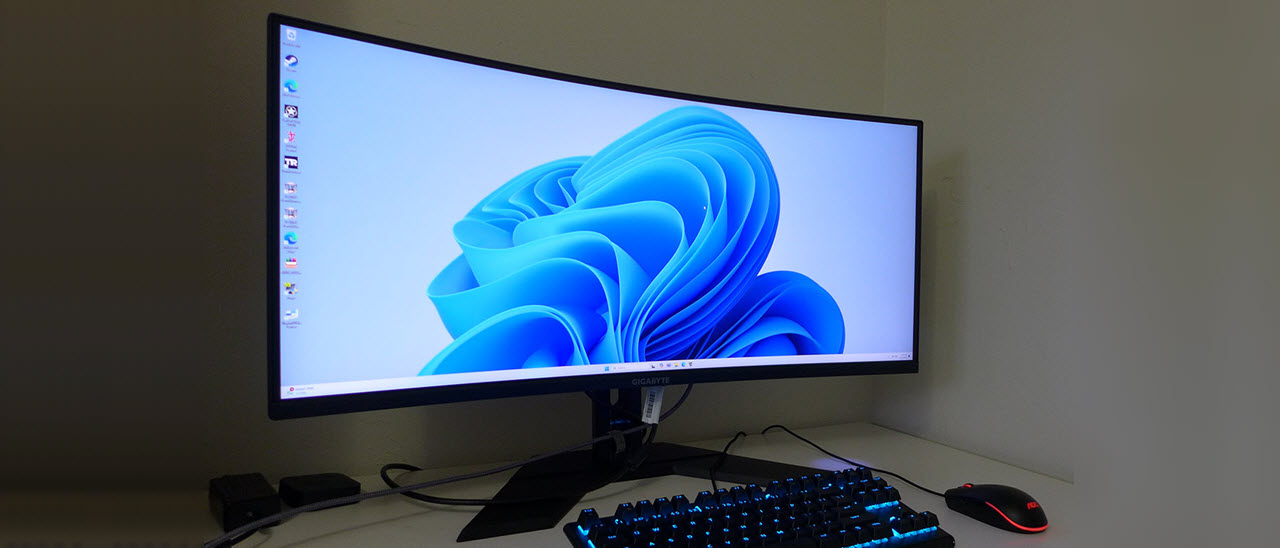Why you can trust Tom's Hardware
Calibrating the G34WQCP is purely optional. But you can improve the default Standard picture mode with a few clicks of the RGB sliders. And a usable and accurate sRGB mode is available for those who need it.
Grayscale and Gamma Tracking
Our grayscale and gamma tests use Calman calibration software from Portrait Displays. We describe our grayscale and gamma tests in detail here.
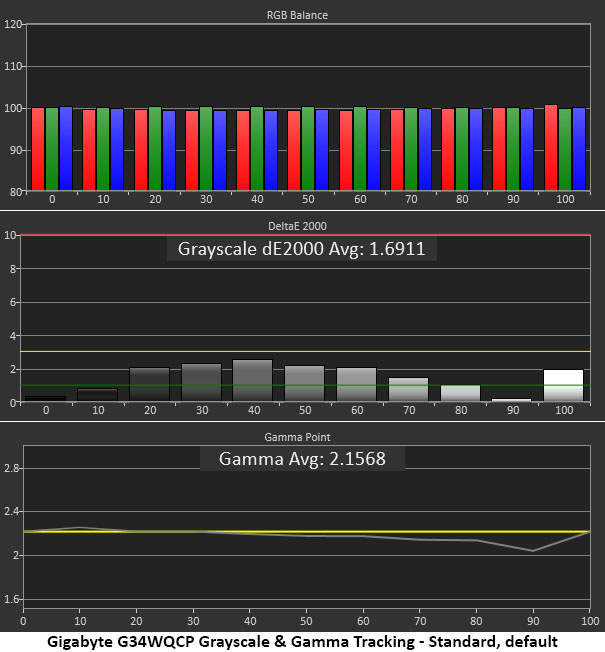
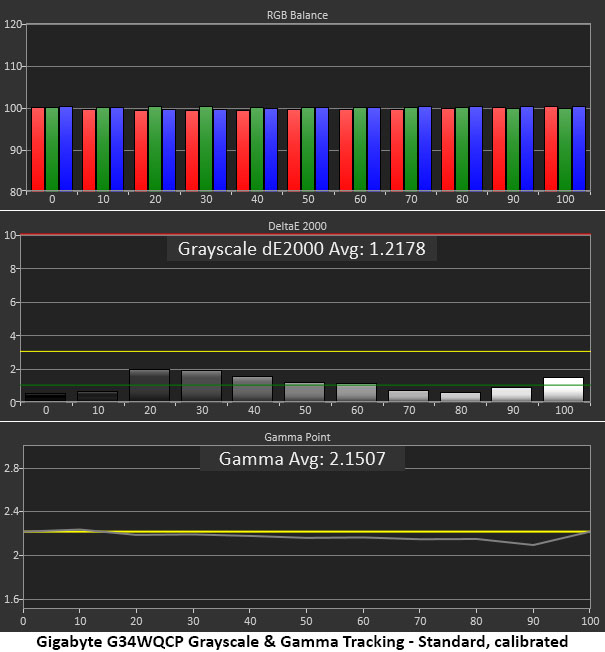
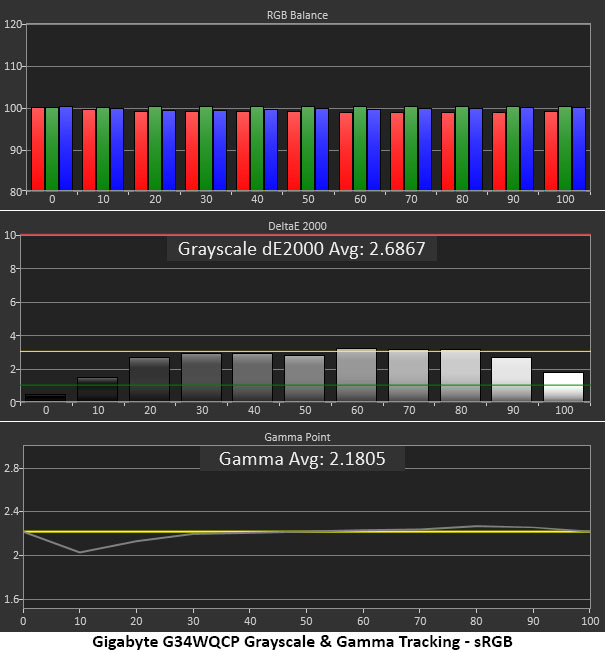
The default grayscale chart shows no visible errors in the Standard picture mode. Mid-tones from 30 to 60% have a barely perceptible green tint. You won’t see an issue unless you’re told it’s there. Since you can’t un-read the last sentence, go ahead and dial in my recommended settings to relieve any suffering. Gamma tracks on the 2.2 line except for a dip at 90% which indicates too-light areas in the image.
Calibration removes any psychological issues from the G34WQCP’s test result. The picture looks visibly better, though honestly, the difference is minute. Gamma is also slightly improved thanks to a reduction in the contrast slider.
If you choose the sRGB picture mode, the only adjustment allowed is brightness. The color temp is a tad green in tone with a gamma dip at the 10% step. These are minor errors and the G34WQCP is qualified for critical applications that require an sRGB or Rec.709 reference.
Comparisons
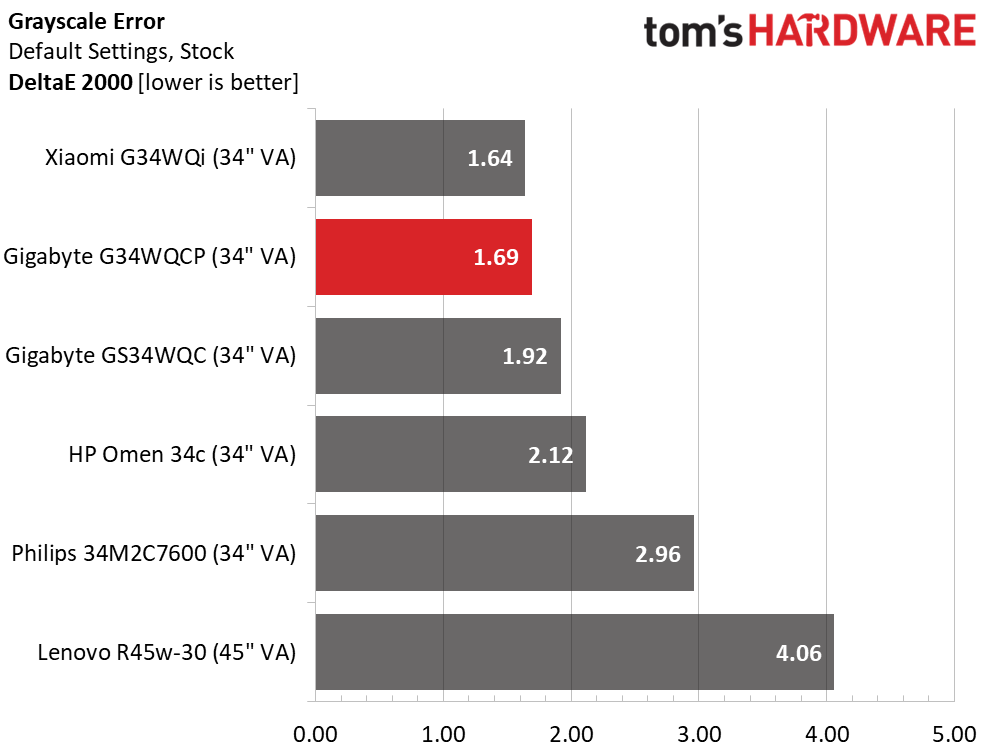
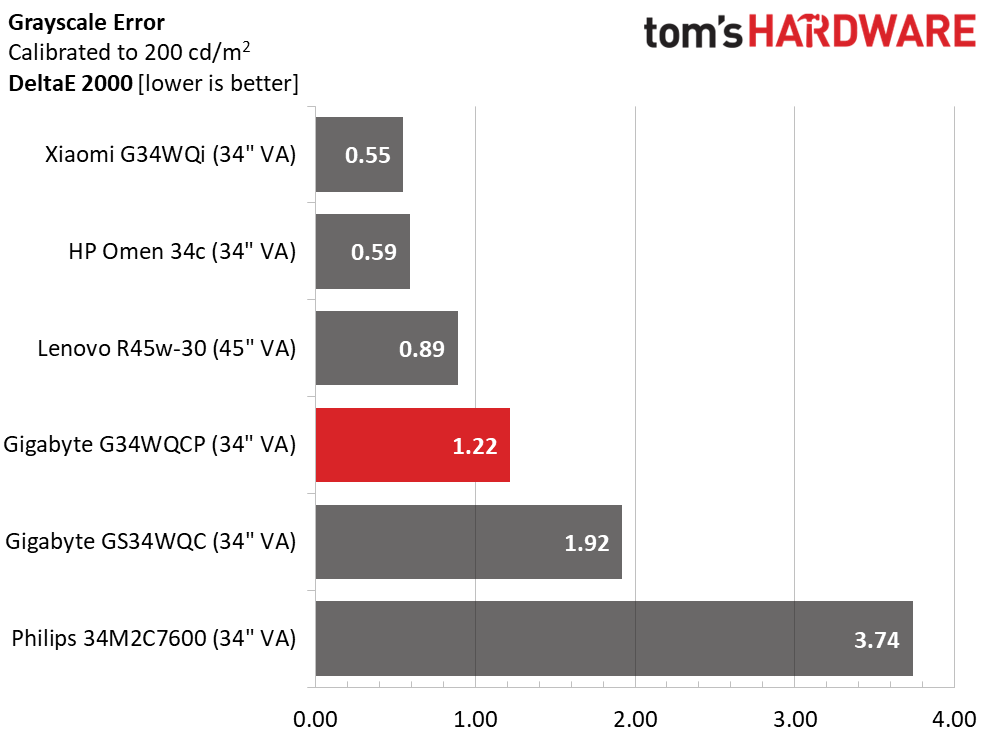
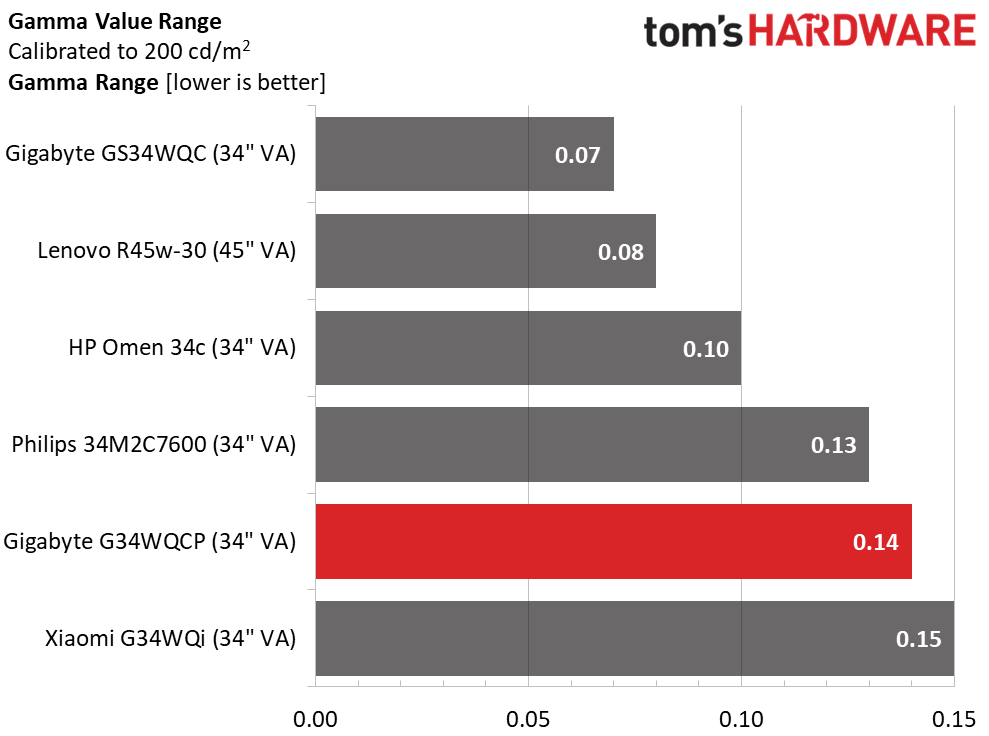
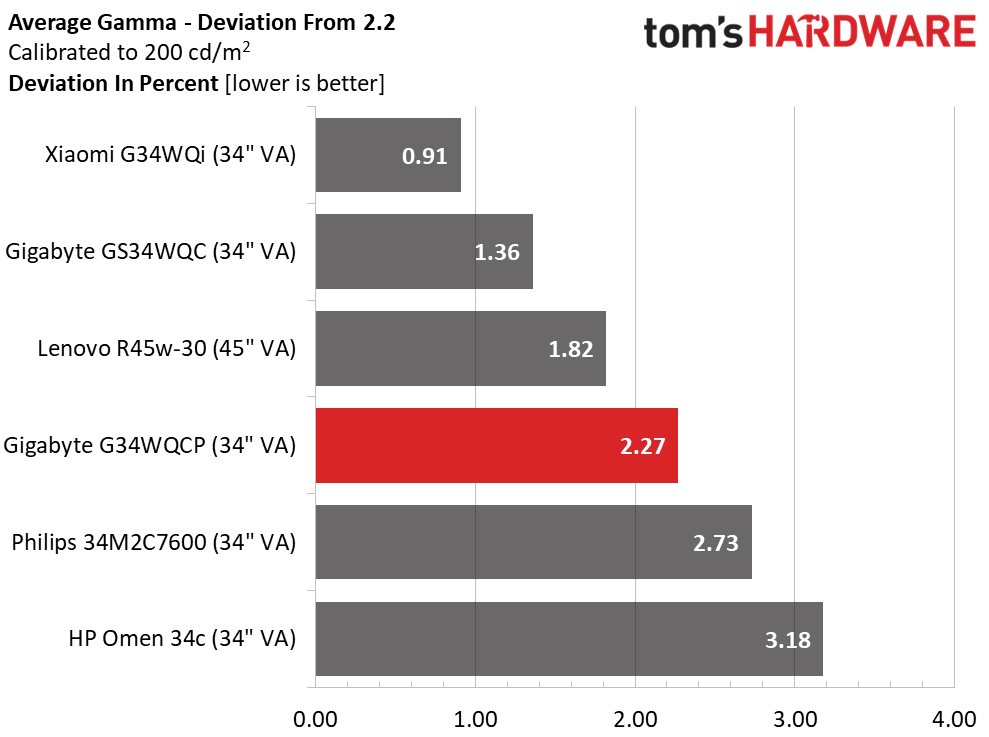
The G34WQCP starts strong with a 1.69dE default grayscale error, putting it in second place among a group of strong displays. Of these, only the Lenovo needs calibration. With adjustments in place, the picture is slightly improved, and it falls to fourth. When color accuracy is considered, any of these displays will satisfy.
In the gamma test, the G34WQCP is slightly hampered by the dip at 90% brightness that I noted earlier. That error is hard to spot in content. With a 2.27% deviation from 2.2, there is no cause for concern here.
Get Tom's Hardware's best news and in-depth reviews, straight to your inbox.
Color Gamut Accuracy
Our color gamut and volume testing use Portrait Displays’ Calman software. For details on our color gamut testing and volume calculations, click here.
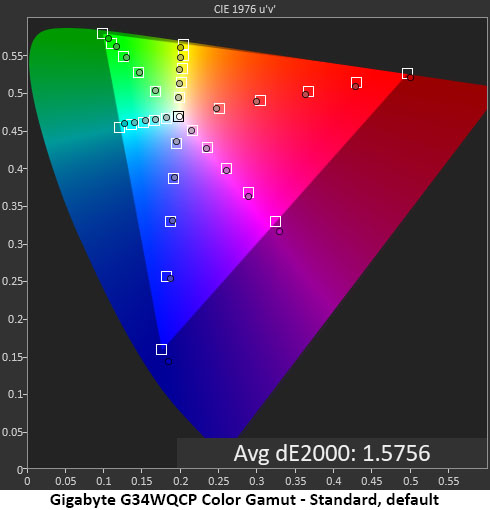
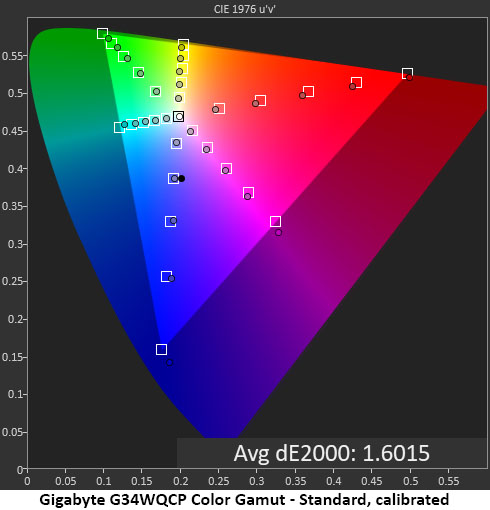
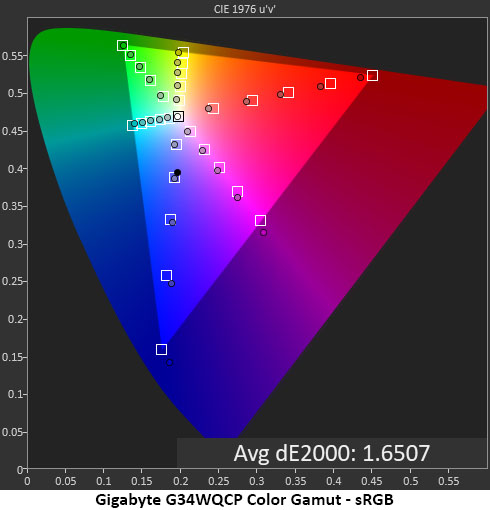
The G34WQCP’s color gamut test results show why calibration is optional. It hits the marks at all points in the gamut with full coverage of red and blue, and only a slight undersaturation in green. This is as good as it gets for monitors without Quantum Dot tech. Calibration increased the average error by 0.02dE, but it’s worth doing for the more neutral grayscale you get.
In the sRGB mode, I measured a slight red undersaturation that reduced overall gamut volume. Other saturation and hue points were on target.
Comparisons
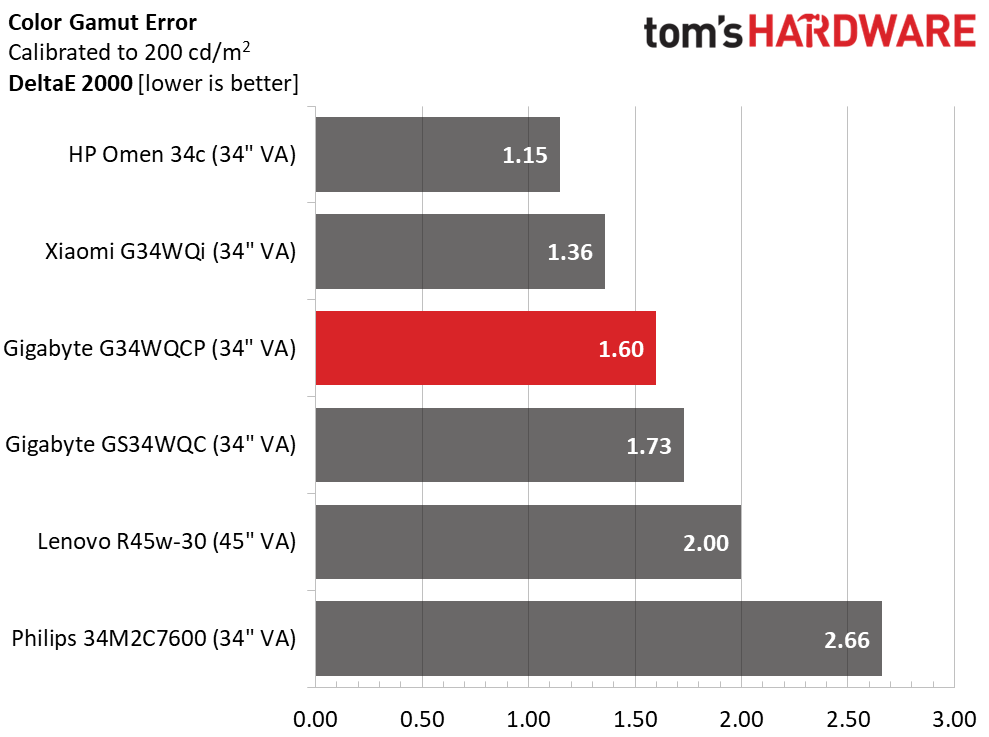
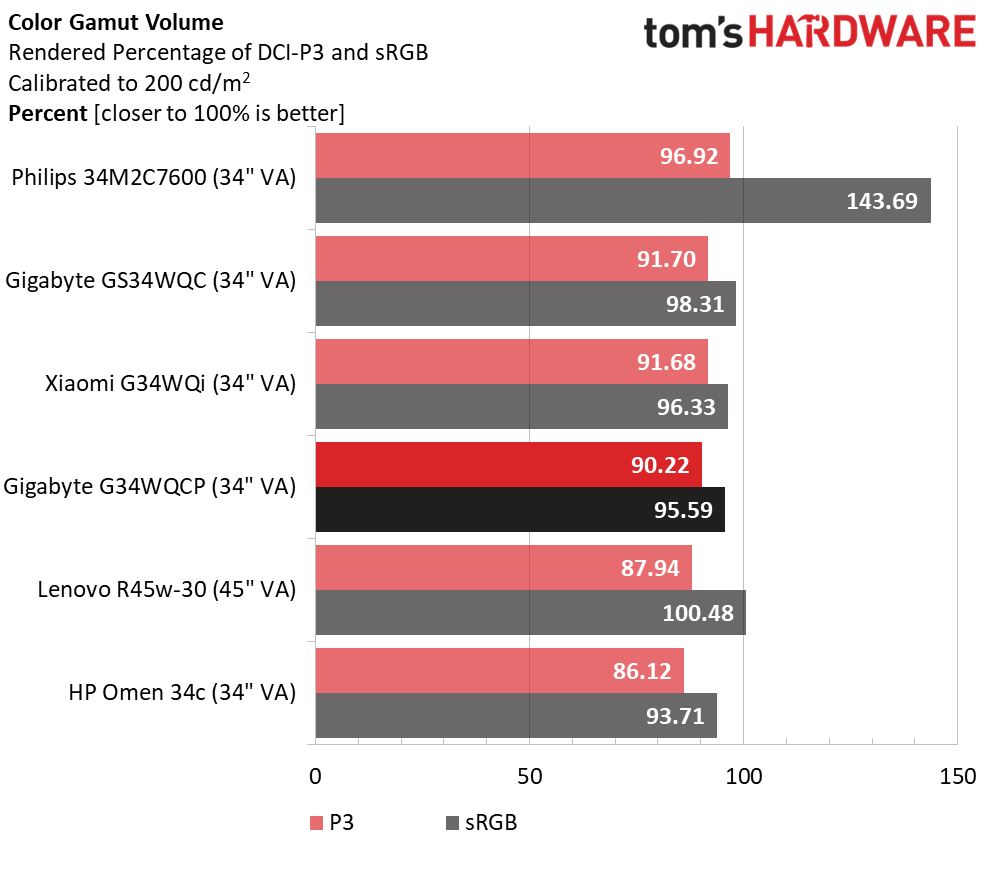
Complaining about the color results from any of the displays is hard. The G34WQCP sits mid-pack with no visible issues to report. 1.60dE is pro-level accuracy.
In the volume test, the G34WQCP sits nicely with just over 90% coverage of DCI-P3. Color is very balanced, and you have to look closely at the gamut chart to see where the deficiencies are. Green is a tad undersaturated and that carries over to the cyan and yellow secondaries. This will be hard to see in actual content and only a Quantum Dot screen will look more colorful. The sRGB result of 95.59% is solely due to red undersaturation. The G34WQCP is qualified for color grading in both gamuts.
Test Takeaway: Calibrating the G34WQCP is optional. You can enjoy it for gaming or productivity without adjustment. Tweaking the RGB sliders makes a slight improvement so it’s worth doing. Against the competition, it acquits itself well as a colorful and accurate display.
MORE: Best Gaming Monitors
MORE: How We Test PC Monitors
MORE: How to Buy a PC Monitor
Current page: Grayscale, Gamma and Color
Prev Page Brightness and Contrast Next Page HDR Performance
Christian Eberle is a Contributing Editor for Tom's Hardware US. He's a veteran reviewer of A/V equipment, specializing in monitors. Christian began his obsession with tech when he built his first PC in 1991, a 286 running DOS 3.0 at a blazing 12MHz. In 2006, he undertook training from the Imaging Science Foundation in video calibration and testing and thus started a passion for precise imaging that persists to this day. He is also a professional musician with a degree from the New England Conservatory as a classical bassoonist which he used to good effect as a performer with the West Point Army Band from 1987 to 2013. He enjoys watching movies and listening to high-end audio in his custom-built home theater and can be seen riding trails near his home on a race-ready ICE VTX recumbent trike. Christian enjoys the endless summer in Florida where he lives with his wife and Chihuahua and plays with orchestras around the state.
-
lttenso Hi... I was ready to Pull the trigger, but then i saw a new revison on gigabyte site, called g34wqcp rev. 2.0, with some diferences... 10bit display panel, mor nits of brigtness, a new stand... Etc... Does the 10 bit panel makes diference? The strange thing is, it maintain the same name with a complete diferent monitor... What do you think about this? Thank youReply -
cyrusfox My main complaint here is the VA panel, though less of a concern as it is a curved display and per your review, sounds like it is the best of this substandard display tech (I have a samsung VA ultrawide and the color shift from center to edge is horrendous, no curve though). Sadly many games I enjoy don't allow ultrawide configuration (SC2). As such I will stick with 16:9|16:10|4:3 configurations going forward.Reply -
Shug_Scotland I got this for my first PC. Its a great monitor, ive played on some good monitors twice the price of this Gygabyte G34WQCP. Just make sure its the updated model that has the P at the end of the model number. If it hasnt got that its the older model which isnt as good. But ive been really impressed with this. Only one draw back is the built in speakers. They arent great. But ive been using them and they're okay. But i understand people like to moan and if there is 1 thing with this product, thats what the moaners will go for. But for me the monitors a 10/10 easy !! £250 ? its a steal trust me.Reply -
Shug_Scotland Reply
I got the updated one last week with the P on the end and its brilliant. Ive played on some good monitors and this beats them. Currys doing it for £250. Free delivery.lttenso said:Hi... I was ready to Pull the trigger, but then i saw a new revison on gigabyte site, called g34wqcp rev. 2.0, with some diferences... 10bit display panel, mor nits of brigtness, a new stand... Etc... Does the 10 bit panel makes diference? The strange thing is, it maintain the same name with a complete diferent monitor... What do you think about this? Thank you
